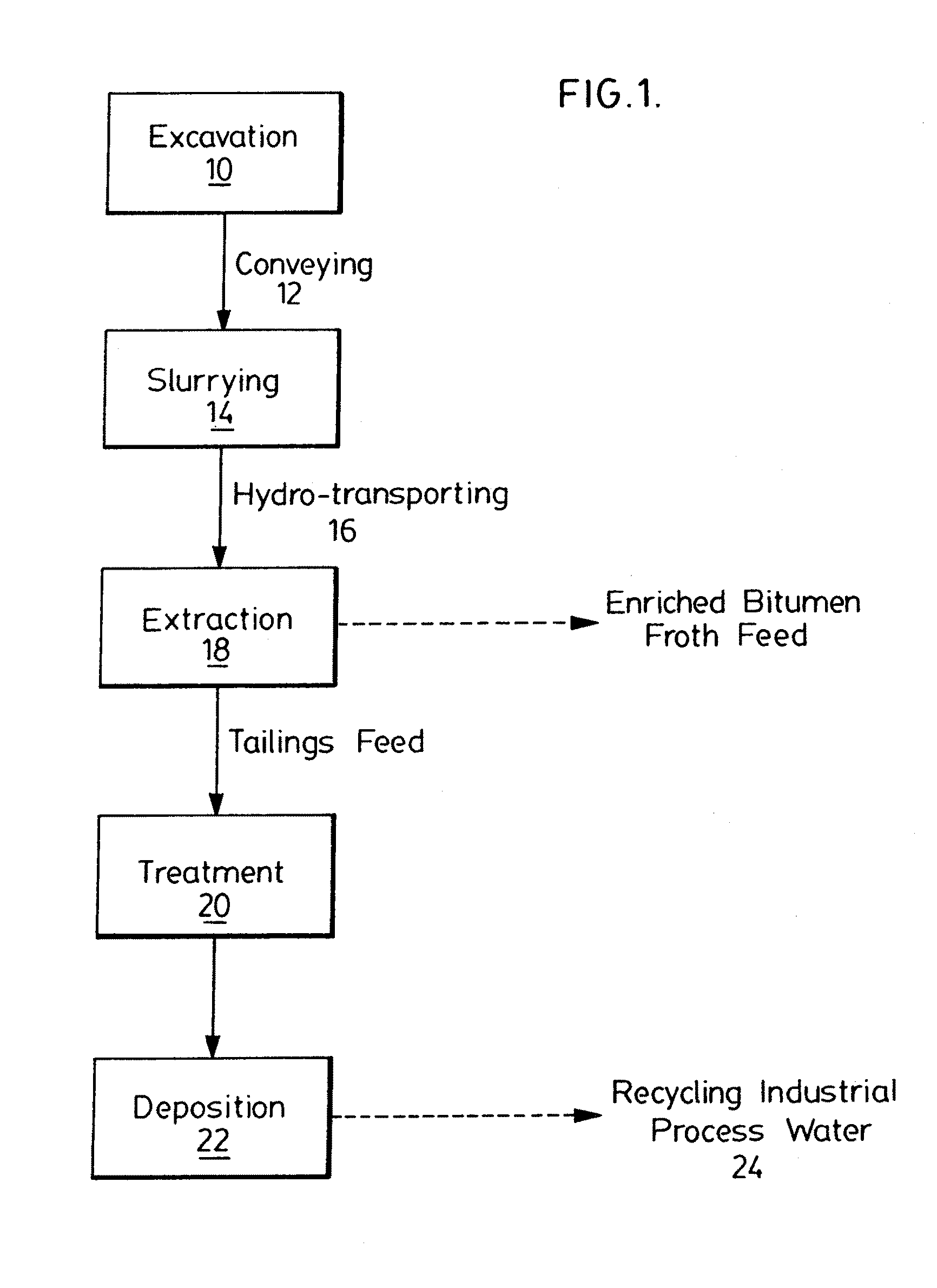Mobile oil sands mining system
a mining system and oil sand technology, applied in the field of mining technology, can solve the problems of no commercially viable method of extracting mineral content, difficult separation of bitumen from water and mineral mixture, and long time-consuming fines
- Summary
- Abstract
- Description
- Claims
- Application Information
AI Technical Summary
Benefits of technology
Problems solved by technology
Method used
Image
Examples
Embodiment Construction
[0036] In one aspect the invention provides a process line for mining an oil sands ore body, the process line comprising an excavator for mining oil sands ore; a comminutor for receiving mined ore from the excavator, comminuting the mined ore to conveyable size and transferring the comminuted ore to a mobile conveyor for transporting the comminuted ore; the mobile conveyor having a free end, a discharge end and at least one drive for advancing the conveyor through an operational arc generally about the discharge end; whereby the excavator mines a section of ore within operational reach along the length of the mobile conveyor and supplies the mined ore to the comminutor, and the comminutor supplies conveyable ore to the mobile conveyor, and whereby the mobile conveyor is periodically moved about the discharge end to locate another portion of the ore body within operational reach of the mobile conveyor until substantially all of the ore body within the operational arc has been mined. ...
PUM
 Login to View More
Login to View More Abstract
Description
Claims
Application Information
 Login to View More
Login to View More - R&D
- Intellectual Property
- Life Sciences
- Materials
- Tech Scout
- Unparalleled Data Quality
- Higher Quality Content
- 60% Fewer Hallucinations
Browse by: Latest US Patents, China's latest patents, Technical Efficacy Thesaurus, Application Domain, Technology Topic, Popular Technical Reports.
© 2025 PatSnap. All rights reserved.Legal|Privacy policy|Modern Slavery Act Transparency Statement|Sitemap|About US| Contact US: help@patsnap.com



